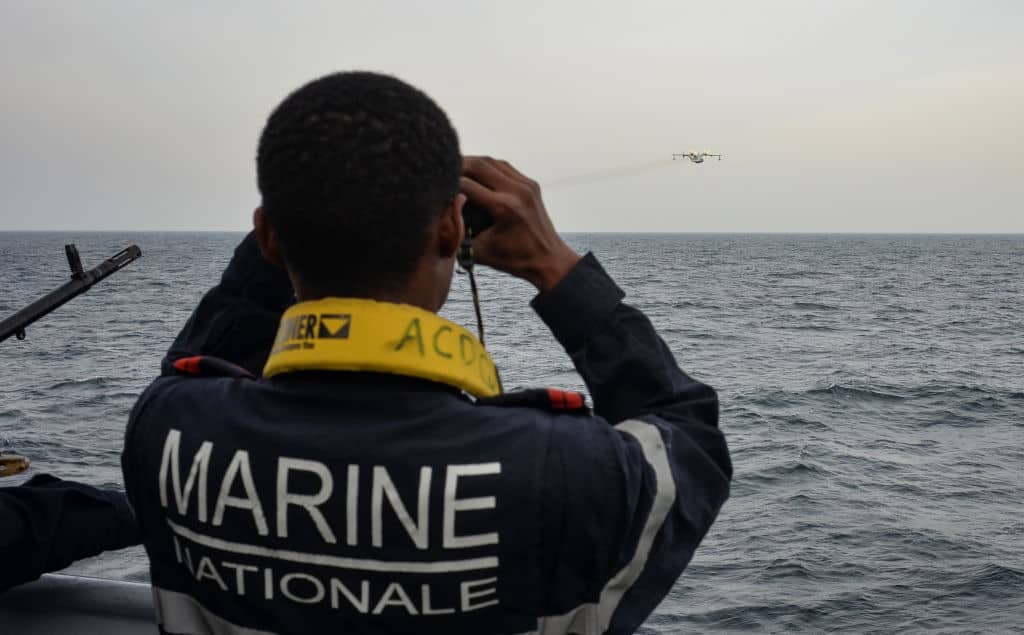For over two hundred years every single European war that Britain has been involved in has originated in the eastern half of the continent. From the Greek War of Independence in the 1820s, to the Crimean War in the 1850s, and from both World Wars – starting with Austro-Hungary’s shelling of Belgrade in late July 1914 and Nazi Germany’s invasion of Poland in September 1939 – to the Bosnian and Kosovo Wars in the 1990s, it has been an iron rule of modern British history that military crises in Europe always come upon us from these eastern lands ‘of which we know little’.
Neville Chamberlain’s pithy description still holds largely true today: British policy in the region formerly behind the Iron Curtain, as well as public discussion of ‘Eastern Europe’, have mostly focused on Poland and the Baltics, where British troops have been deployed. But this northern focus risks a lack of appreciation of dangers further south.
For all the attention given to the Baltic – with almost every major wargame or book since 2014 assuming that a hot war with Russia would start there – it is the much less discussed Black Sea region where any actual Russian warfighting has ever occurred. This includes Chechnya (1990s), Georgia (2008), Crimea and Donbas (2014-15), and now Putin’s all-out assault on Ukraine. Russia’s bases on the Black Sea – chiefly Sevastopol – have acted as the jump-off point and resupply depot for its military operations in Syria. While Nato planners have been primarily fixated on the Suwalki Gap, Moscow has long emphasised the ‘southern strategic direction’ – including the Balkans – in its military activities.
It is time for the West to wake up to the full strategic realities of the Black Sea region and recognise that it is here, not in the Baltics, where the long-term struggle against Russia’s expansionism will be decided. Whatever the outcome of the Ukraine war, countries like Romania or Moldova are now potential flashpoints in Eastern Europe’s new security landscape.
There are multiple ways in which Russia could exploit local complexities and vulnerabilities to trigger new military crises which could see Nato dragged into a conflict. At over 380 miles, Romania’s border with Ukraine is the longest of any Nato country’s. Snake Island, occupied by Russian troops in the early days of the war, lies only 28 miles away from the Romanian coastal city of Sulina. Crimea, bristling with Moscow’s missiles, ships and warplanes, is some 250 miles to the east – less than half an hour’s flight for Russian Sukhoi Su-34 bombers. The Russians can strike Constanta, Romania and Nato’s largest port on the Black Sea, directly from Crimea, with Iskander missiles.
With the invasion of Ukraine and Russian troops pressing on Nikolayev hoping to get to Odessa, Romania’s military situation has been transformed more than that of any other Allied nation. The maritime picture has decidedly worsened with the Russian navy gaining control of the waters in the upper part of the Black Sea, after destroying the Ukrainian naval forces in the first phase of the war.
This matters a great deal with regards to what the Russians might be planning to achieve in the Budjak, the bit of Ukraine that stretches south of Odessa and borders Romania, Moldova and Transnistria. Over the past week Russia’s Black Sea Fleet has been reportedly shelling coastal towns like Zatoka and Bilenke, which lie on the only direct land route from Romania to Odessa. (If used for this purpose this would also be the shortest direct supply route to a Ukrainian area of operations, at only 186 miles long.)
The alternative road passes through the southern tip of Transnistria which has hosted Russian ‘peacekeepers’ since the 1990s. Russia may well attempt a landing in the Budjak, looking to cut southern Ukraine off from Romania and to link with its Transnistrian contingent. All this serves as a reminder of just how close Romania is to the fighting – and therefore how exposed its position has become on Nato’s military map.
The prospect of having Russian troops again stationed on its frontiers – and especially on the Danube Delta – has been Romania’s darkest nightmare ever since the Red Army left the country in 1958 after 14 years of occupation. If Odessa ever falls, Russia will not only complete the conquest of Ukraine’s entire coastline. It will also obtain a land bridge to Transnistria, the unrecognised ‘republic’ that broke away from Moldova in the 1990s when the Soviet Union disintegrated and that has been a frozen conflict ever since.
With Russian regular troops then marching into Transnistria, it is entirely possible that Moscow will seek to replay the Donbas scenario in Moldova. The Transnistrian authorities would press the Moldovan government to accept the federalisation of the country – something they’ve pursued for a long time – at (Russian) gunpoint. Such a Minsk II-type agreement would be impossible for Moldova to oppose on its own given its puny armed forces. This would leave Russian-controlled Transnistria with a veto over Moldovan affairs, certainly ending the country’s EU aspirations.
Such a scenario would open huge dilemmas for Nato given that Moldova is Romania’s sister country, with the two only separated from each other in 1945 by Stalin. Bucharest and indeed the other Nato capitals could hardly watch passively as the last democratic, whole and free country standing between Russia and Nato crumbled to Kremlin pressure. What if Moldova – which is neutral by its constitution – asks for an international ‘peacekeeping’ mission to deploy on its eastern border, for example?
Another emergency ‘solution’ for such a situation, already mooted in some quarters, would be for Moldova to recognise Transnistrian independence and then ask for reunification with Romania, thus becoming a Nato territory overnight. None of this will likely come to pass, but it does give a flavour of the very real dilemmas – and the clear and present danger – confronting local policy-makers and indeed the Alliance as a whole as the consequences of Russia’s potential military advance through Ukraine are gamed out.
Consolidating and unifying Nato’s eastern flank is now the first strategic priority. This requires a political decision in Western capitals to give equal weighting to both ends of the Baltic-Black Sea frontline. Militarily, Nato’s eastern flank has been unbalanced by design since the Alliance’s 2016 Warsaw Summit which established an ‘enhanced Forward Presence’ in Latvia, Lithuania, Estonia, Poland and the Baltic Sea; and a much weaker ‘tailored Forward Presence’ in Romania and the Black Sea (which is now being hastily upgraded in response to the war). The latter may have contributed to Nato’s failure to deter the Russian invasion.
Another complicating factor has been that Romania sits on an organisational “seam” or borderline between Nato’s Northern and Southern European operational commands. Together with the Black Sea region, it falls just within the area of responsibility of Nato Joint Force Command in Naples which is largely a maritime command. Yet Romania’s main military problem with respect to Russia is on land, not in the maritime domain as sometimes erroneously conveyed by an overemphasis on the Black Sea.
To make matters worse, the network of relationships – among officials, politicians, experts, businesspeople – and mutual interests and ties between west European and Baltic states, including Poland, has no real equivalent around the Black Sea.
This mostly reflects a failure on the part of regional countries, especially Romania and Moldova, to seek a higher profile in the geopolitics of Europe. They have generally opted instead for a lower-key, unimaginative foreign policy: often out of a lack of vision, but also out of concern about possible Russian reactions. Turkey should have been an important partner, but the complexities of Ankara’s own policy towards Russia and the West have likewise worked against the construction of a coherent Allied policy in the Black Sea region.
All this must change if the West is to properly secure this area and deter further Russian aggression, particularly against Moldova which is the most vulnerable target. Aside from what Nato itself can do through new Allied deployments, policies and strategic messaging, there is an essential political and economic role that leading nations like Britain can play in integrating these countries more closely into the frameworks, dialogues and relationships that have developed in the Baltic space.
This ‘connectivity’ work will also have to take advantage of wider regional initiatives such as Three Seas which also takes in the Balkans. Britain is already powering up its efforts along these lines, with the Prime Minister’s appointment of Air Chief Marshal (Ret’d) Stuart Peach as UK’s Special Envoy to the Balkans. This is a canny move that demonstrates a different level of British intent in the region, given that Peach is a former Chief of the Defence Staff who has just completed his term as Chairman of Nato’s Military Committee.
Since the start of the war, Romania has also received visits from top UK military figures, including the British Chief of the Defence Staff, Admiral Sir Tony Radakin, and the Chief of the General Staff, General Sir Mark Carleton-Smith. The Defence Secretary, Ben Wallace, will also travel to the country in the very near future. This intensified UK focus on Romania as a key Nato bastion in the region should not remain circumstantial: it should morph into a more sustained engagement at the higher official levels.
Britain needs to develop a policy for Eastern Europe that takes in the entire region – from the Baltic to the Black Sea – as a whole. Given what we know about these lands’ historical ability to drag us into their wars, stabilising this part of the world deserves all the attention and resources we can spare.






Comments